The Netherlands have qualified for the quarter-finals of this summer’s European Championship after beating Romania 3-0 in Munich.
Romania started the match brightly, but Ronald Koeman’s side took over and earned the lead after 20 minutes thanks to Cody Gakpo’s third goal of Euro 2024. The Dutch dominated the rest of the half, particularly down the right flank, but Edward Iordanescu’s side, as they have done throughout the tournament, remained a threat on the counterattack.
Gakpo then contributed to a second goal for the Netherlands in the dying minutes, working the ball brilliantly along the goal line and sliding it for Donyell Malen, before Malen added a third (over a boot) in added time to seal an impressive victory.
Jacob Whitehead, James McNicholas, Liam Tharme and Seb Stafford-Bloor analyse the key talking points from the match.
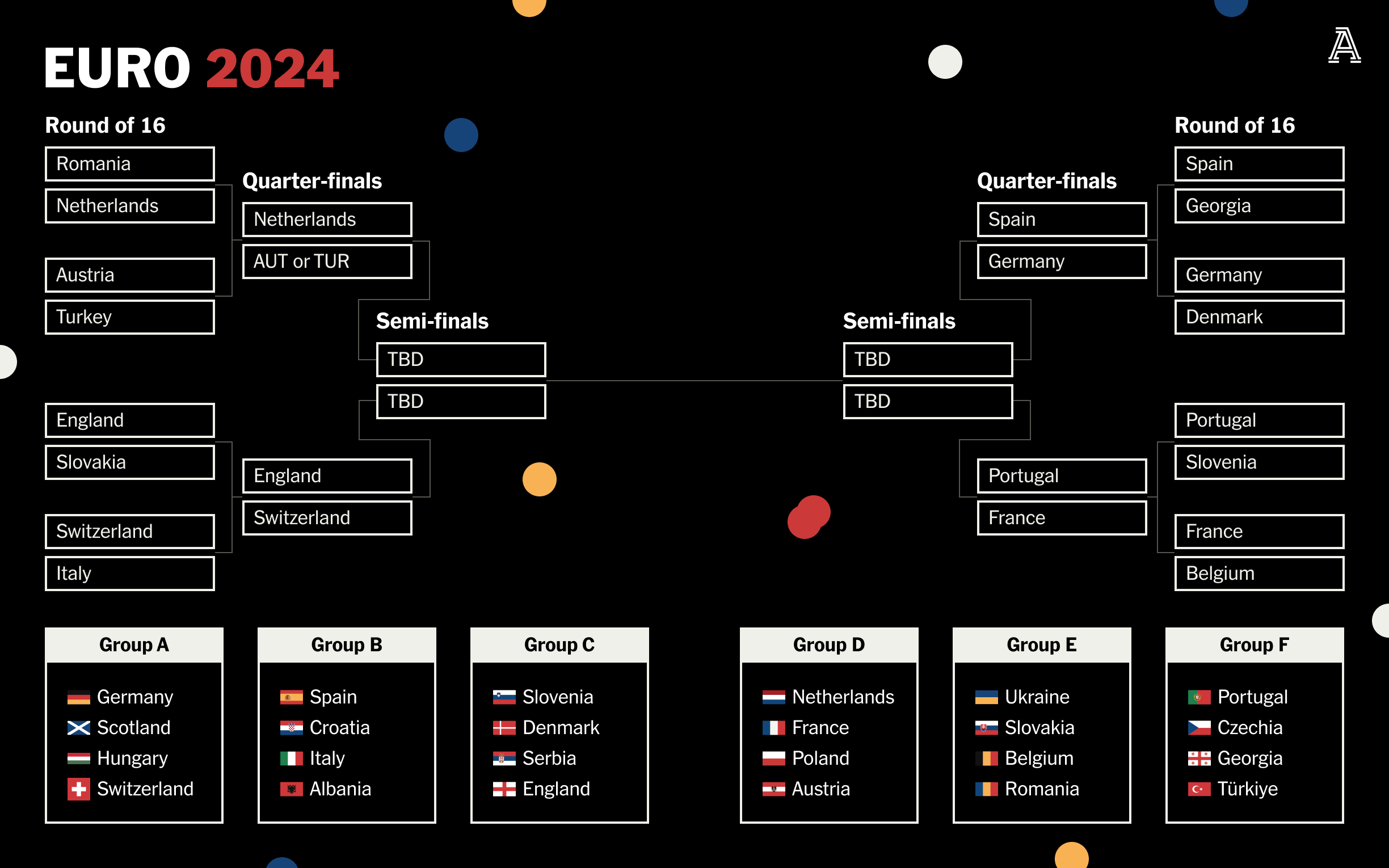
Was it… a pair of shoes on the field?
It was one of the most curious spectacles of this European Championship.
As Donyell Malen slalomed towards the penalty area, defenders backing away furiously from him, Romanian goalkeeper Florin Nita should have been preparing to try and keep the score at 2-0.
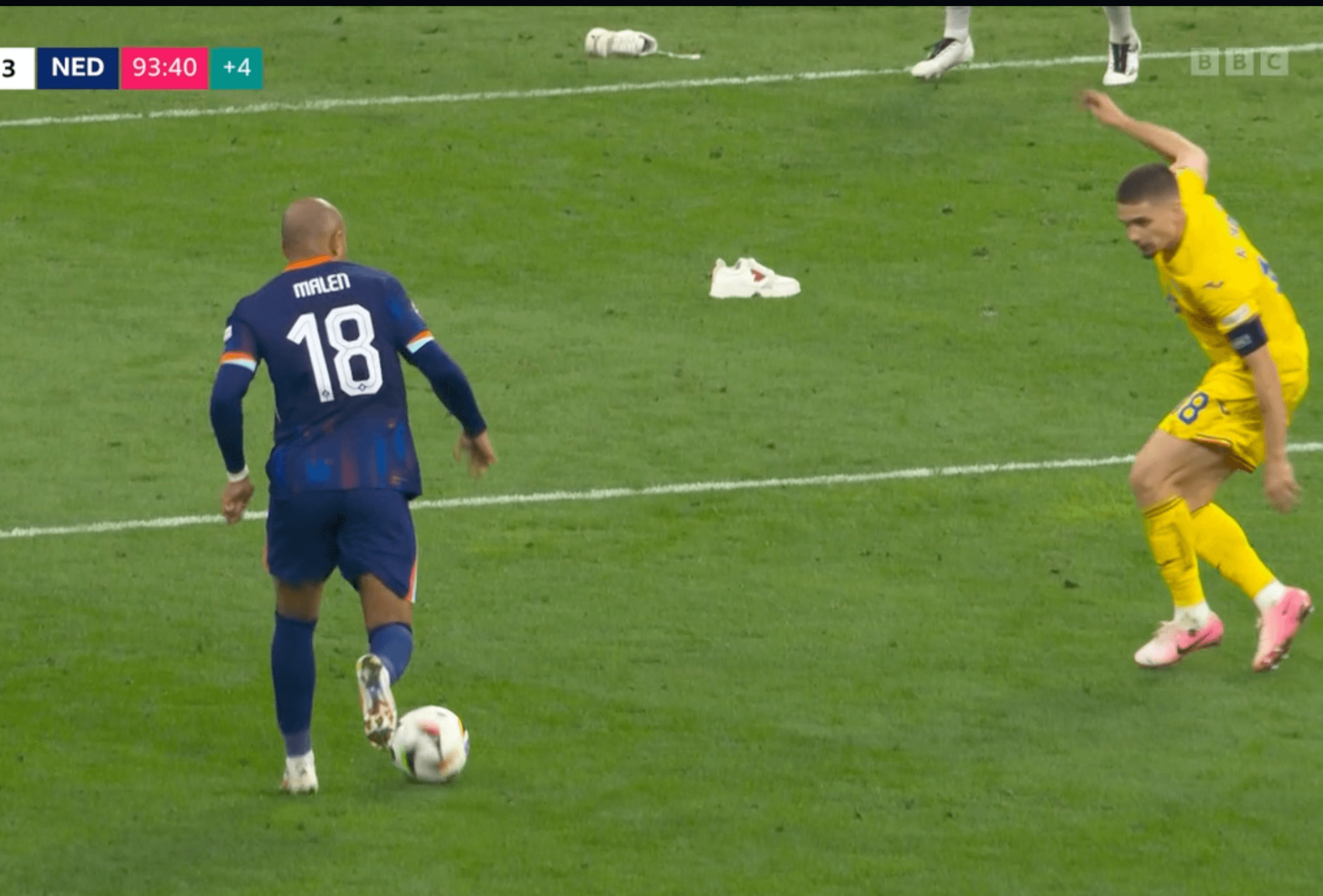
Instead, Nita was more concerned with pushing away a boot that was just to his right. He managed to do so, but only before Malen took a shot, which duly landed in the back of the net.
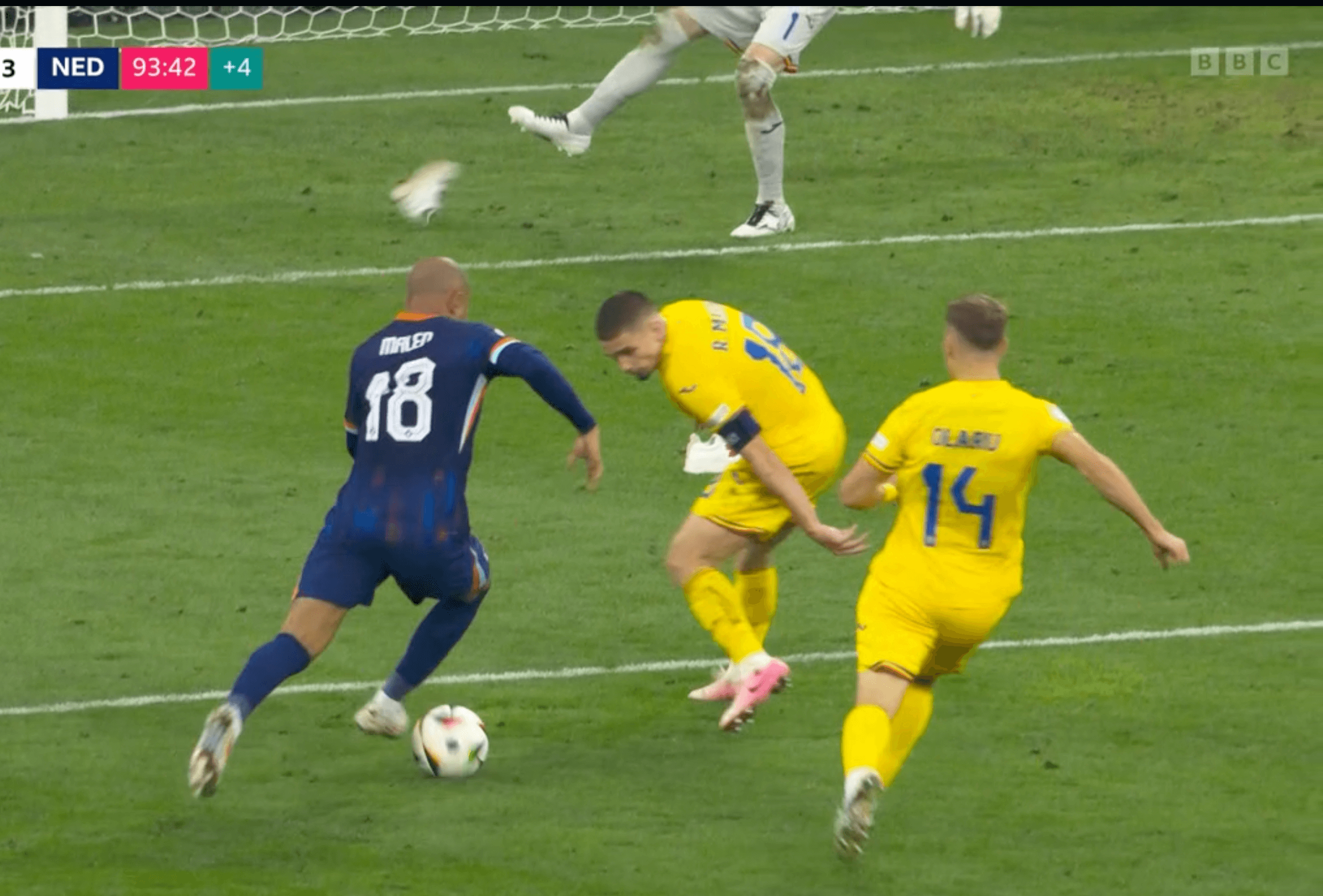
It wasn’t the decisive moment of the game, but it was a strange one. Where had the sneaker and its partner, lying a few meters away on the field, come from? A young fan had invaded the field moments before, but the shoes lying on the grass were too big to belong to him. They had probably been thrown from the crowd, which only adds to the mystery.
Why did they do it? Answers are needed.
Andrew Fifield
Gakpo’s goal was a great glimpse of total football
Ronald Koeman has been questioned from all sides during this tournament. Too conservative. Guilty of favoritism. Avoiding press conferences. One of the heaviest criticisms has been that of the style: too pompous, uninspired and lacking in energy.
In a country where the legacy of Johan Cruyff reigns supreme, that’s a pretty strong criticism to level at the national team. After the defeat to Austria, Koeman was asked if he thought Cruyff would get sore eyes watching this iteration of the Oranje.
“It’s a difficult question,” Koeman said, with uncharacteristic reserve. “I know he liked attacking football a lot, but I was in his team for a long time and we had worse games than against Austria. Of course, we are a proud nation, we like to win, we like to play beautiful football, but that’s not always the case.”
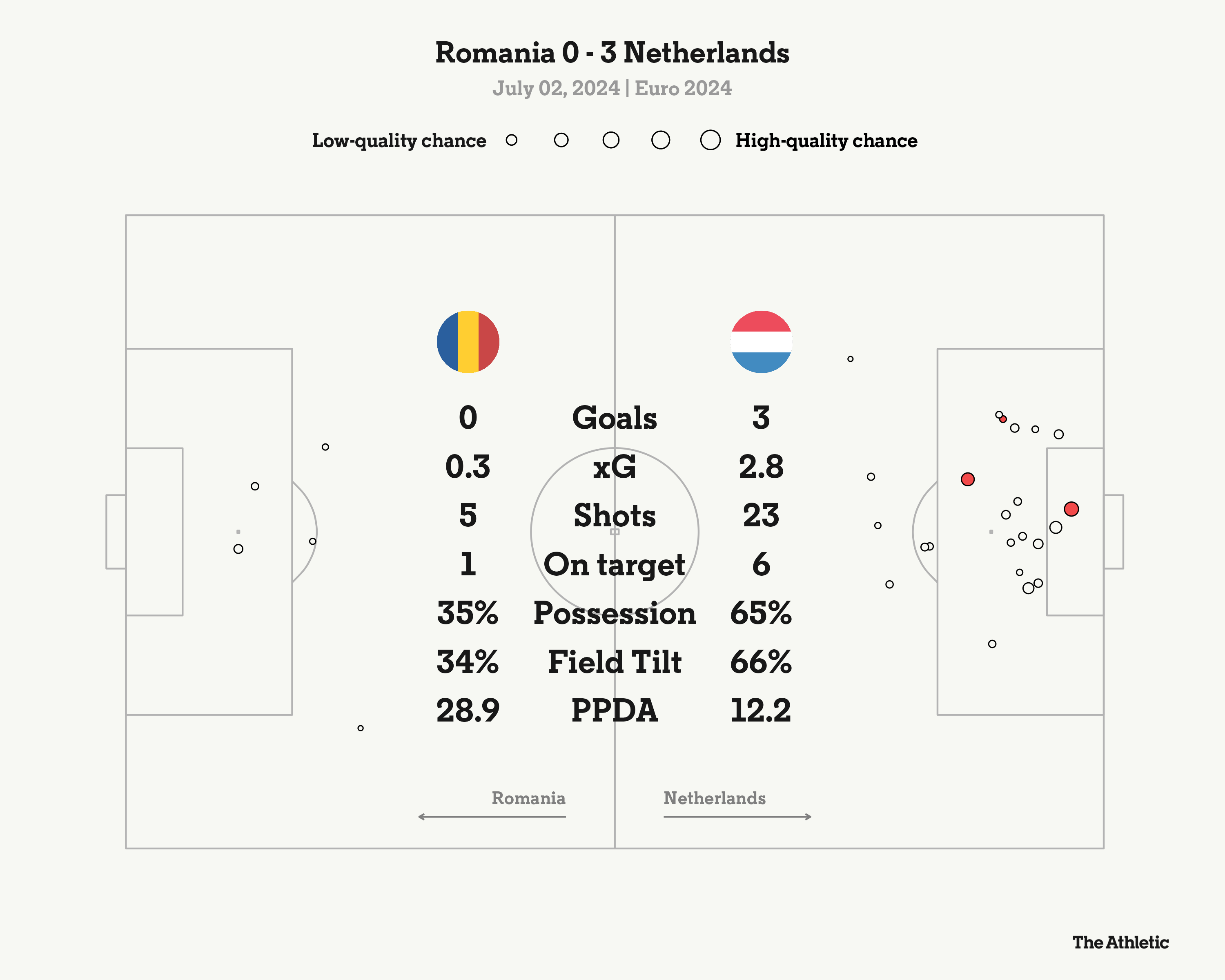
Fortunately for Koeman, it came thanks to Gakpo’s goal in the 20th minute, the Netherlands’ best attacking move so far.
Dutch use of Cruyff’s principles
| Principle | Do? |
|---|---|
|
Compact the ground |
No |
|
Against pressure |
Yes |
|
Deep wide front |
Yes |
|
Create an extra man |
Yes |
|
The third man runs |
No |
|
Create one-on-ones |
Yes |
|
Positional interaction |
No |
|
Defense Forward |
Yes |
One of Cruyff’s key footballing principles was positional rotation, but it was a principle the Netherlands had yet to put into practice at this tournament.
But with Denzel Dumfries back after a minor injury and stepping up, he allowed the right winger to float in. This time it was Steven Bergwijn (more on that later), who then became a dual No.10 with Xavi Simons.
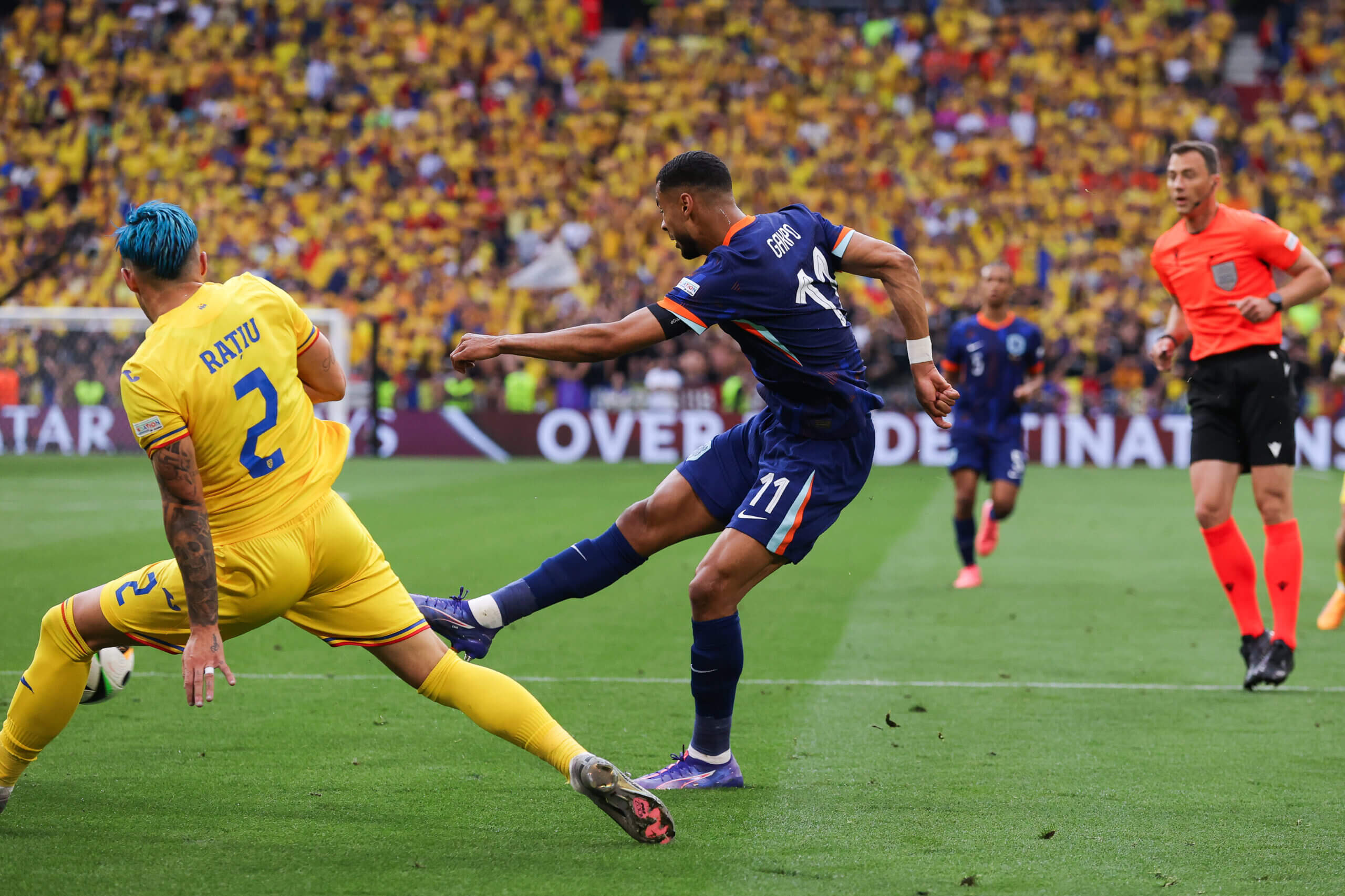
(James Gill – Danehouse/Getty Images)
Dumfries exploited Romania’s lack of width throughout the game, and here they overcompensated, with left-back Vasile Mogos closing in on him and leaving the centre-backs with far too much space to cover. They couldn’t mark both Simons and Bergwijn – plus the space behind them – and a perfectly-measured pass from Simons found Cody Gakpo in acres of space. 1-0 to the Netherlands with a finish at the near post – and some of Koeman’s Cruyffian credibility restored.
Jacob Whitehead
Are the Dutch coming to this tournament at the perfect time?
Watching the Oranje in top form is one of the most captivating spectacles in international football, and there were signs that Koeman’s side were finding their groove.
The Netherlands dominated possession against Romania and, as they grew in confidence, produced a number of spectacular dribbles and feints. Spain have been the most aesthetically pleasing team in the competition so far. Given the individual talent and flair that Koeman possesses, the Netherlands may be the only team that can match them in terms of entertainment.
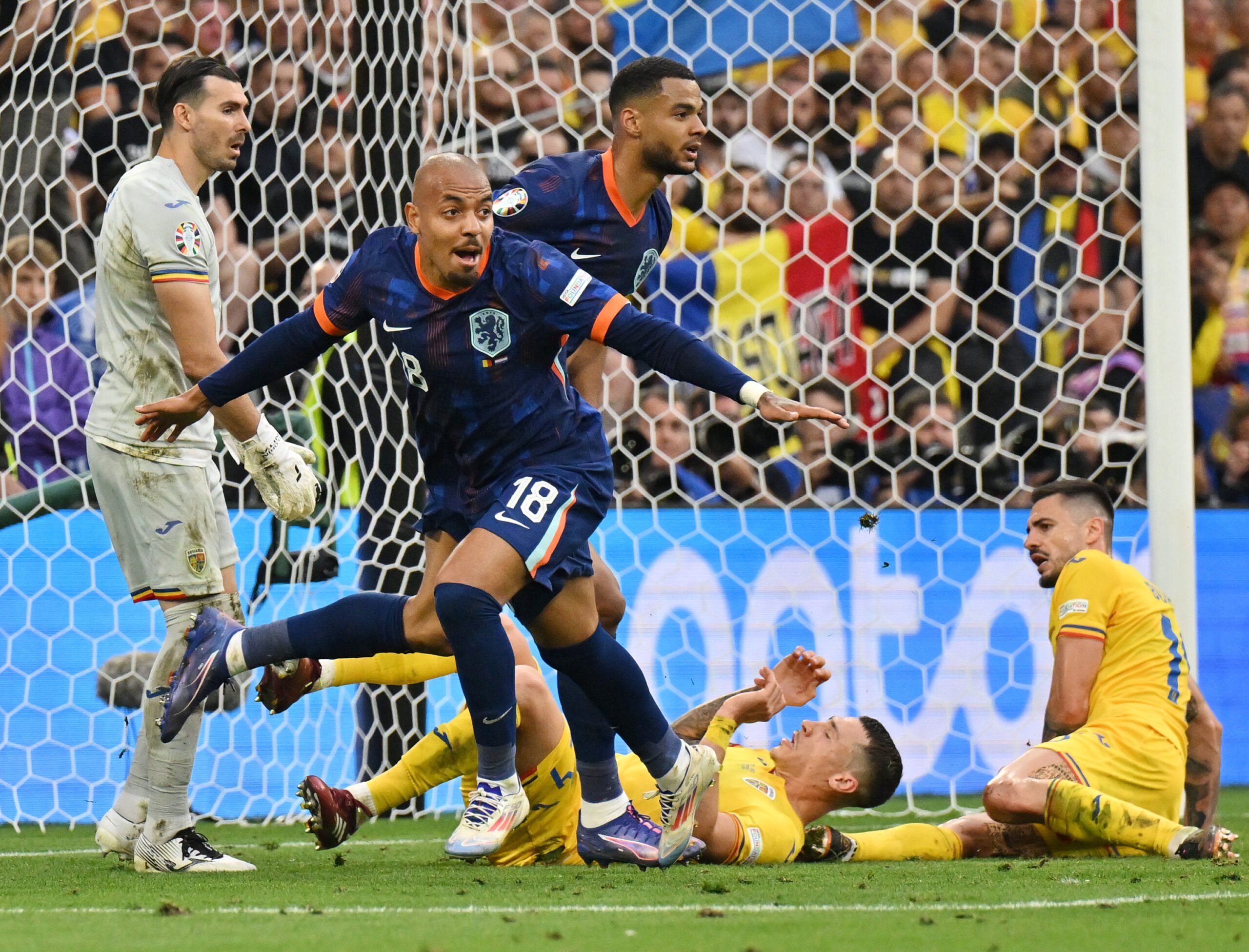
(Sébastien Widmann – UEFA/UEFA via Getty Images)
If this team is missing anything, it is a capable centre-forward. For a nation with a rich history of brilliant goalscorers, that is unusual. Gakpo may be the joint top scorer in the competition, but had he been complemented by a ruthless central striker, the Netherlands would surely have won this game much sooner.
James McNicholas
The Romanian defense was heroic, but it had to be
There are two ways to judge Romania’s defensive performance. In isolated moments it was spectacular and impressive. Radu Dragusin made an exceptional clearance under his own crossbar in the first half. Andrei Ratiu made another exceptional tackle to prevent a goal from Xavi Simons in the second half. Two highlights among many other counters and tackles.
It’s excellent, but also damning in its own way, because it was heroic by necessity, describing how poorly protected this defence was and how often it was exposed to the Netherlands’ quick, penetrating ball movements.
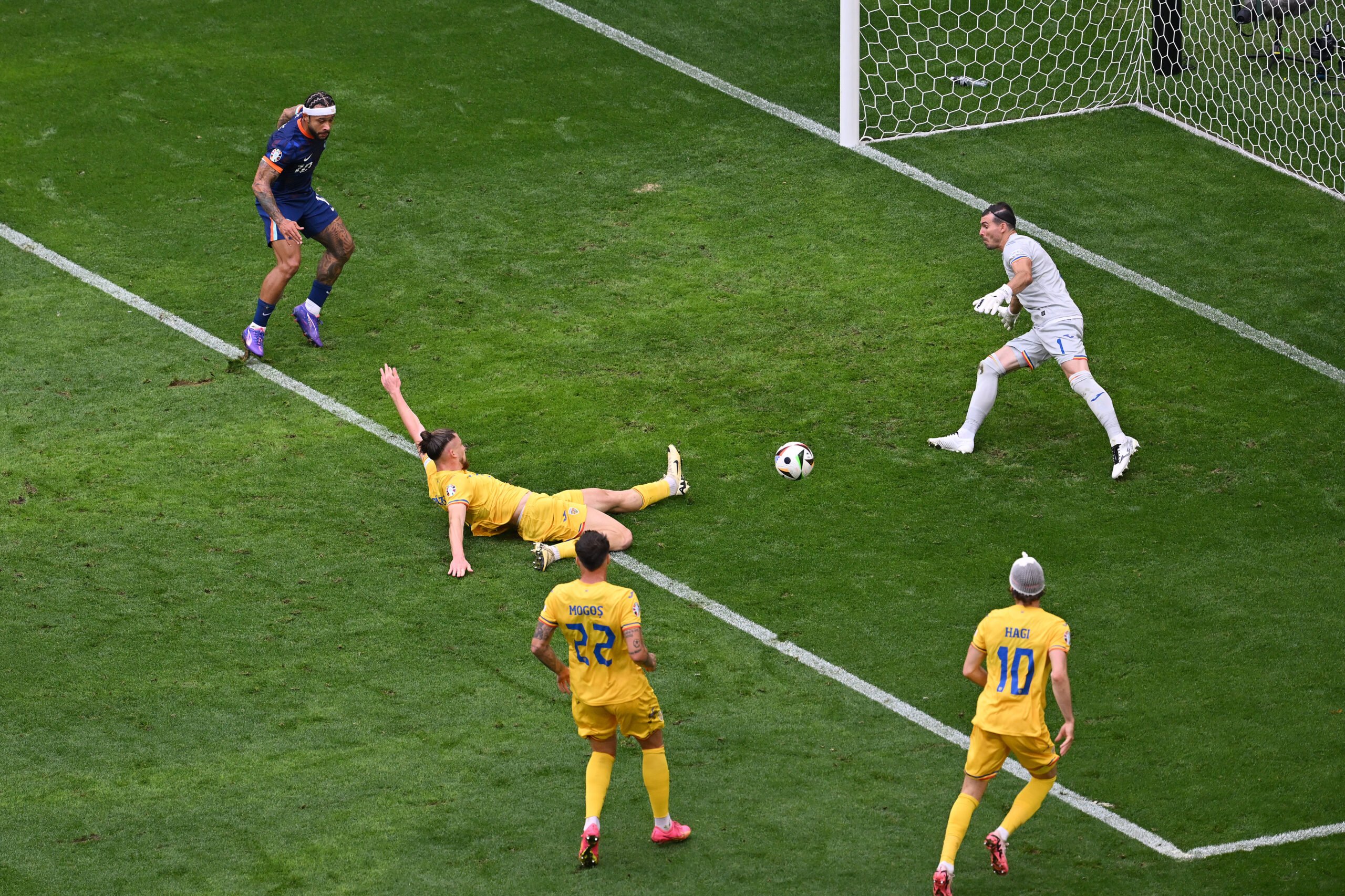
(Chris Ricco – UEFA/UEFA via Getty Images)
Romania didn’t press high on purpose. But they didn’t really put any pressure on the midfield either. Tijjani Reijnders, in particular, was able to receive the ball in spaces, turn, carry the ball and find decisive spaces with his passes.
The fact that the score remained 1-0 for so long was due to some of the Romanian defenders. The fact that further Dutch goals seemed inevitable for so long suggests a game plan that didn’t quite work.
Seb Stafford-Bloor
Bergwijn unlocks the Dutch attack… for 45 minutes
Under increasing pressure in his homeland, Ronald Koeman made three changes to his team for the round of 16 tie against Romania.
One of his most effective changes was allowing Steven Bergwijn to make his tournament debut. Although Gakpo opened the scoring by cutting in from the left, most of the Netherlands’ most impressive play came on the right, where Bergwijn was deployed.
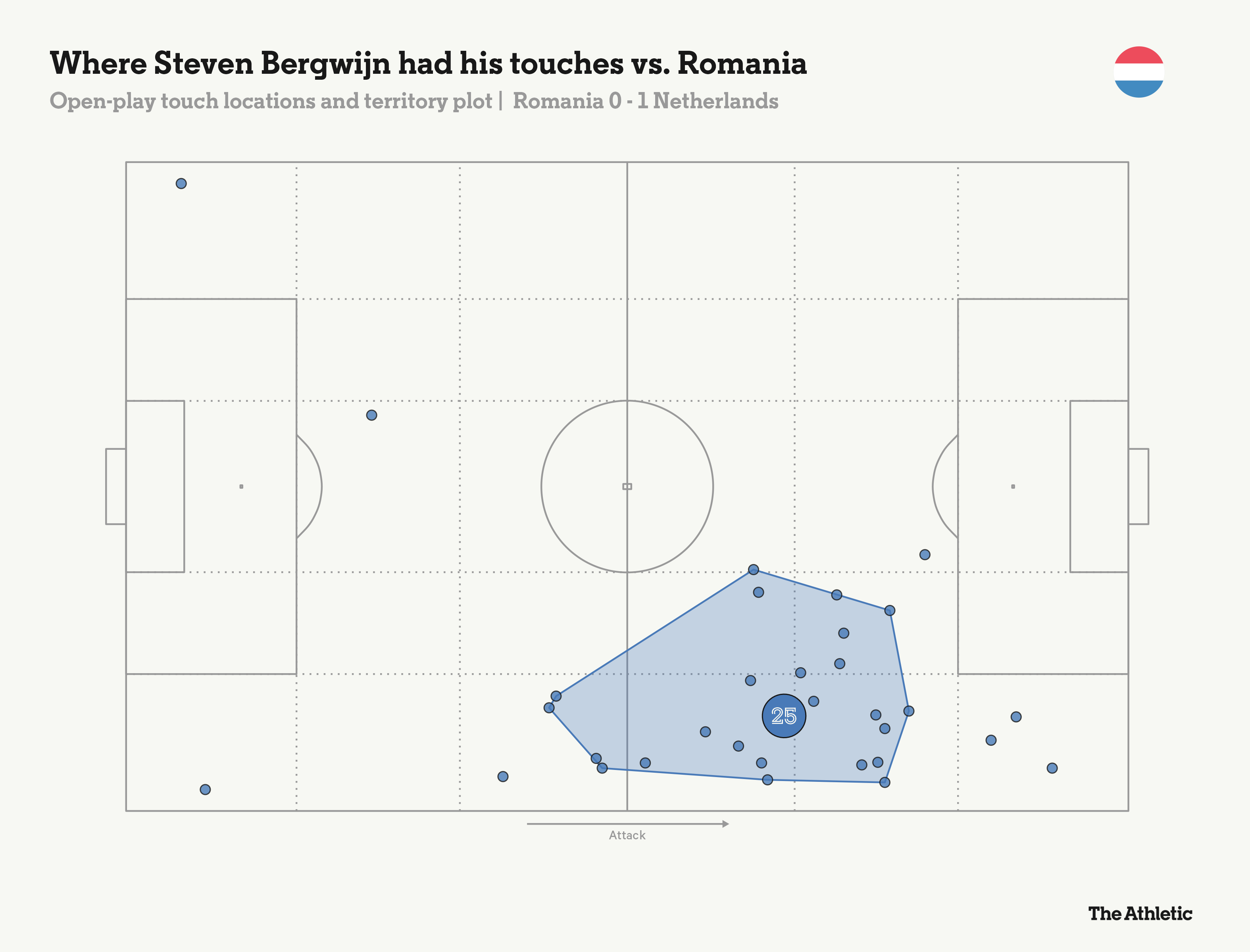
Thanks to Denzel Dumfries’s running, Bergwijn has been able to occupy more central positions. He has played as a centre-forward and second striker for Ajax this season, and his ability to burst into the half-spaces has helped unlock what has been a somewhat turgid Dutch attack so far.
Bergwijn has good close control and game awareness, so he is effective in tight spaces. This has allowed him to prove an effective opponent for Dumfries and Memphis Depay.
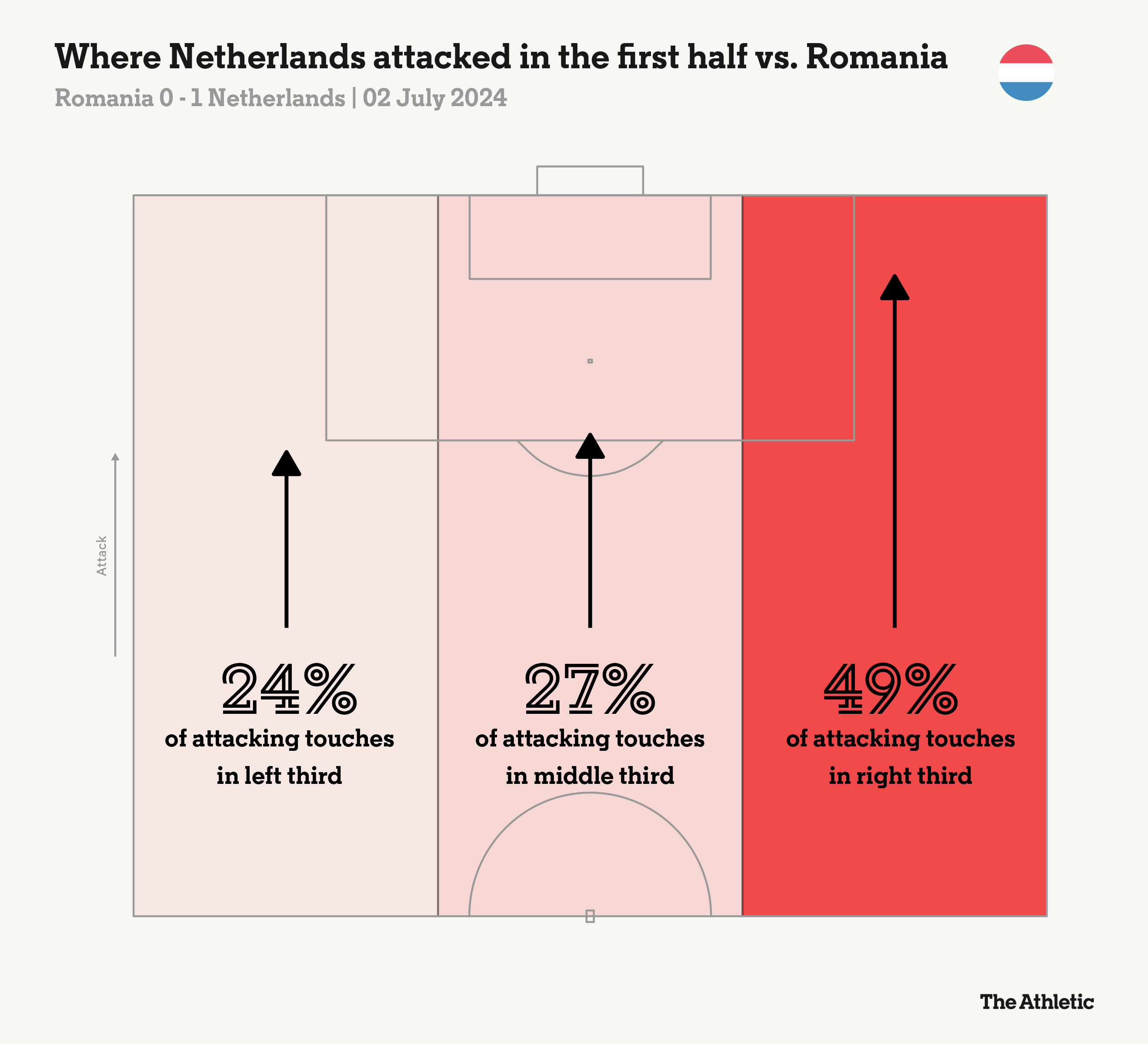
Unfortunately for Koeman, Bergwijn’s impressive performance was cut short. He was replaced by Donyell Malen at half-time due to an injury. Koeman’s decision to bring Malen on in place of Jeremie Frimpong showed that he wanted to continue playing with a right-footed striker who plays in central areas rather than on the touchline.
James McNicholas
The early goals tournament continues
Cody Gakpo opened the scoring for the Netherlands after 20 minutes. By tournament standards, that’s a pretty early goal, especially in the round of 16 where knockout games make things more difficult. Except by Euro 2024 standards, it’s a late goal. This tournament has always been about early openers: the Netherlands conceded after six minutes of play on Matchday 3 against Austria and 16 minutes on Matchday 1 against Poland. It’s the first time in the tournament that they’ve scored first.
Even with eight games to go, Euro 2024 has already seen more goals scored in the first 30 minutes of play (33) than Euro 2020 (29). It is creating some strange game situations, with weaker teams taking the lead by surprise against stronger teams and being able to hold back for longer, or teams with more possession scoring earlier than they would have expected and having to decide whether to try to keep the ball or hold back for longer.
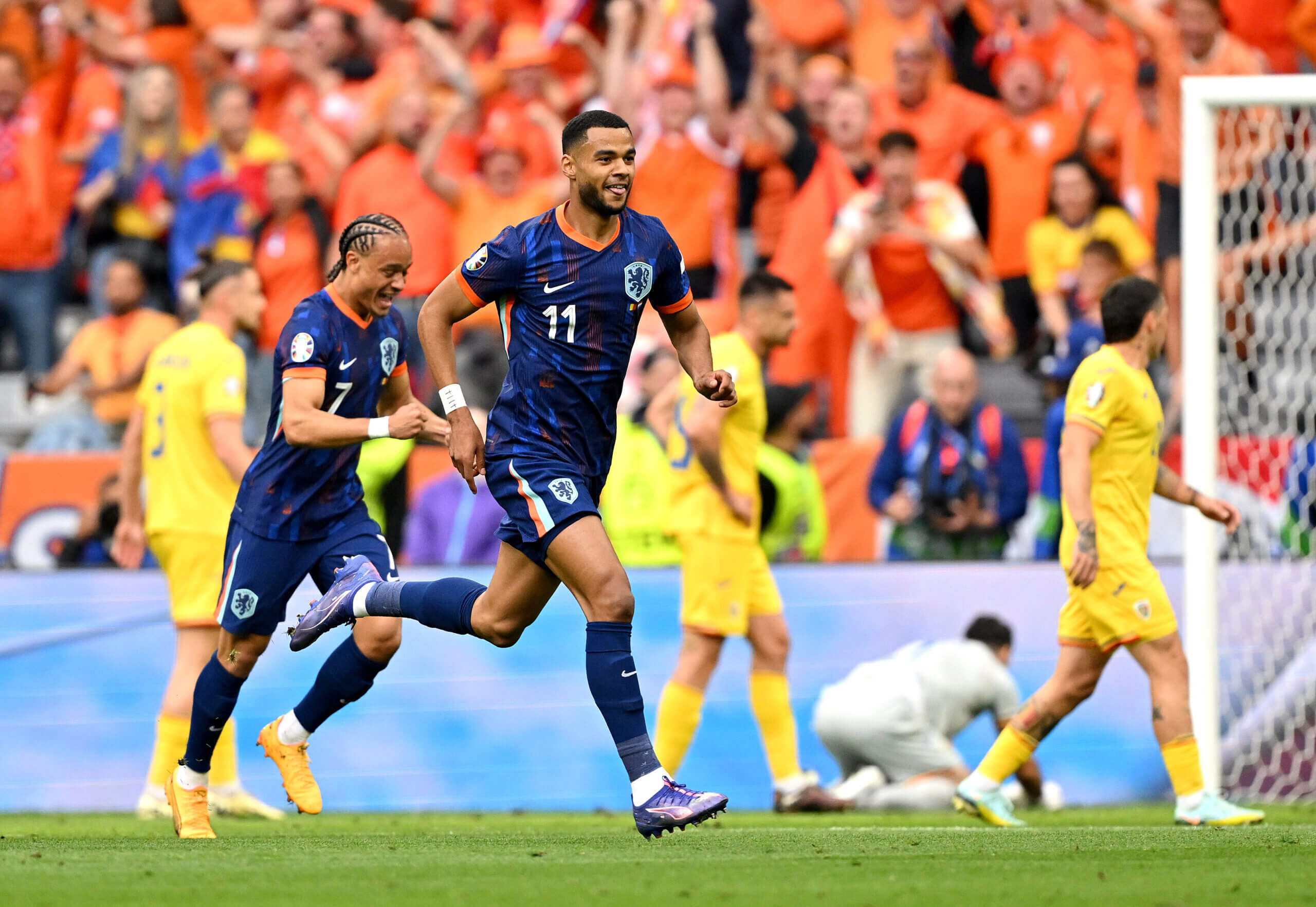
(Sébastien Widmann – UEFA/UEFA via Getty Images)
The Netherlands chose to push further forward in the first half in search of a second goal, but had to deal with a flurry of attacks and set pieces from Romania late in the first half.
As both Belgium coach Domenico Tedesco and Slovakia coach Francesco Calzona have pointed out, the level of the “small” European nations has increased at this tournament, particularly in terms of their out-of-possession strategy, as demonstrated by Romania with their solid defenders from a 4-4-2 midfield/low block. This means that comebacks are still possible in matches, with the win rate for teams that score first being just 55% at this tournament, well below the 71.4% at Euro 2020.
If goals change games, then first goals really do change games.
Liam Tharme
Recommended Reading
(Top photo: Getty Images)